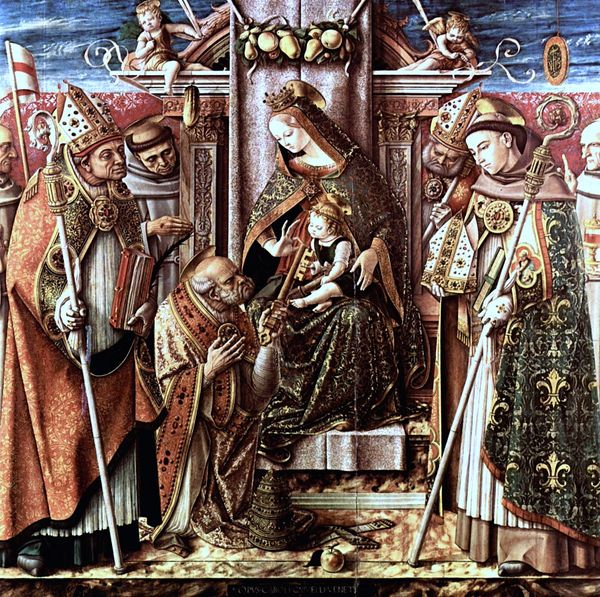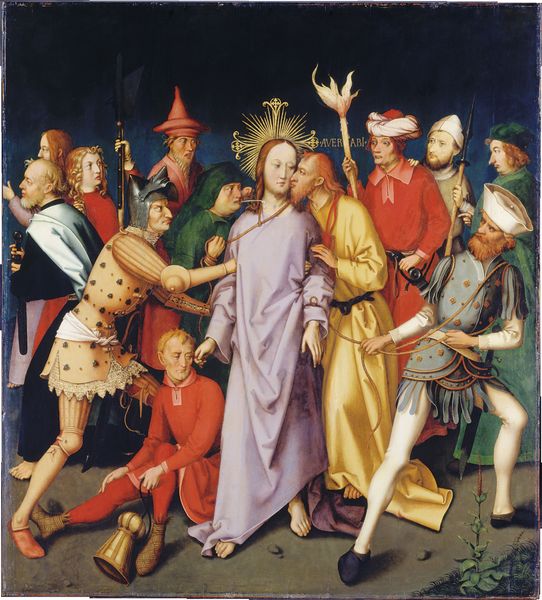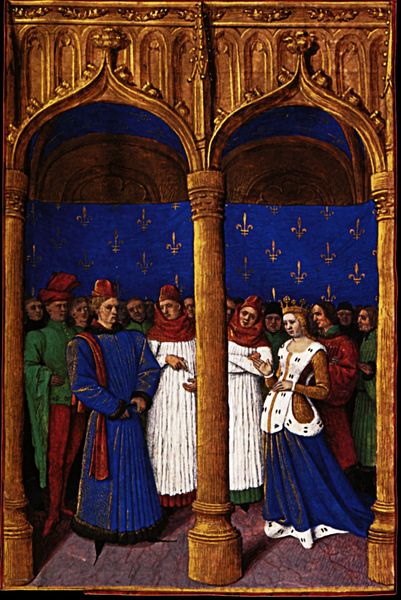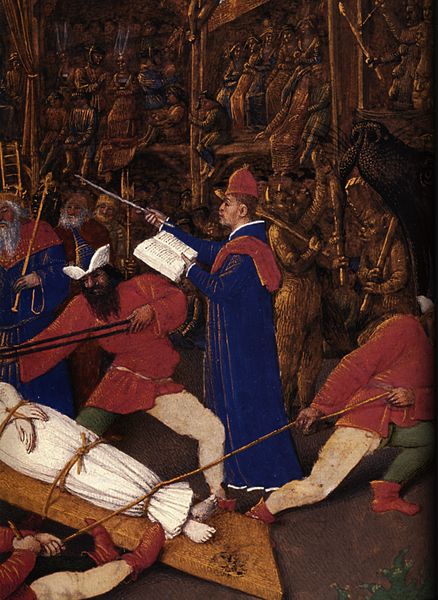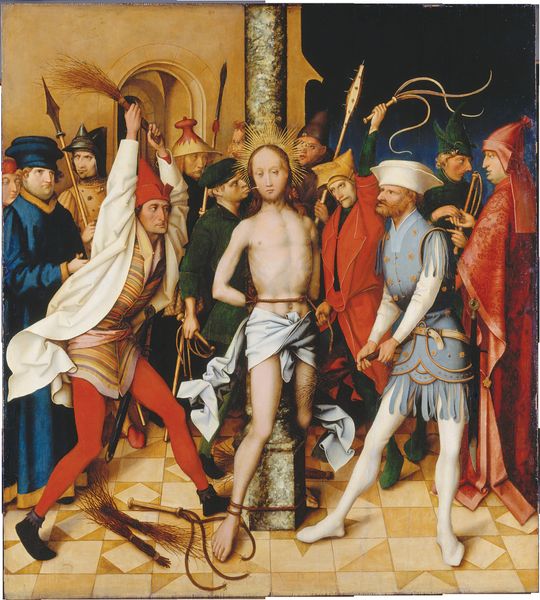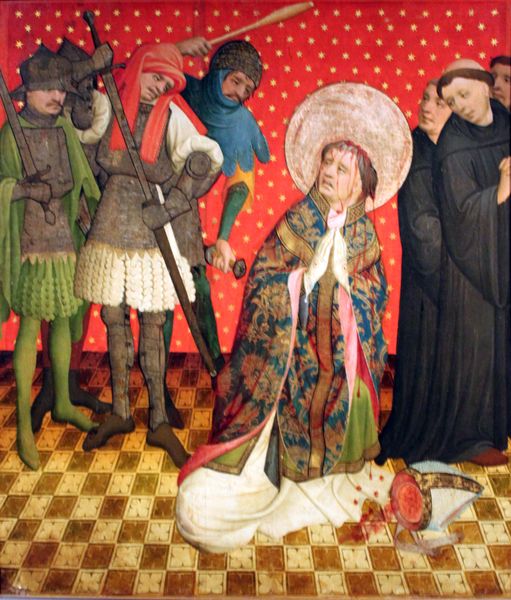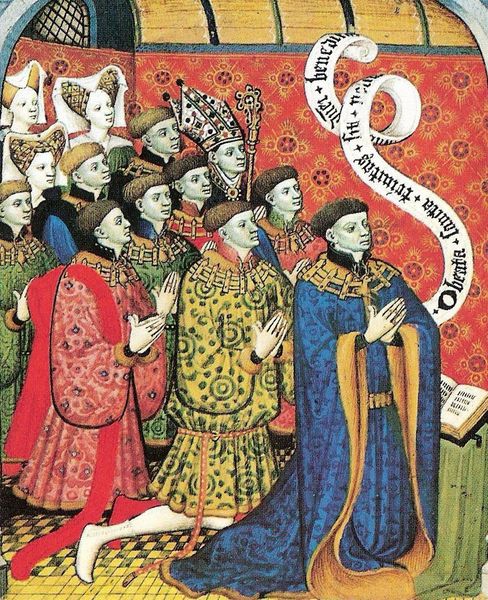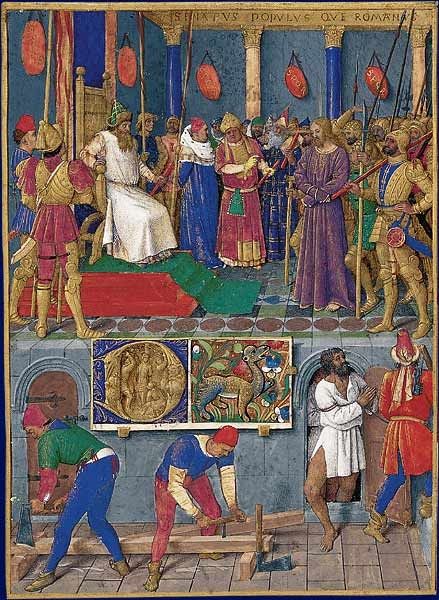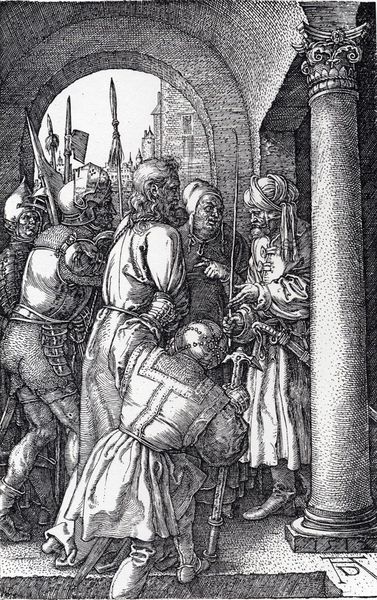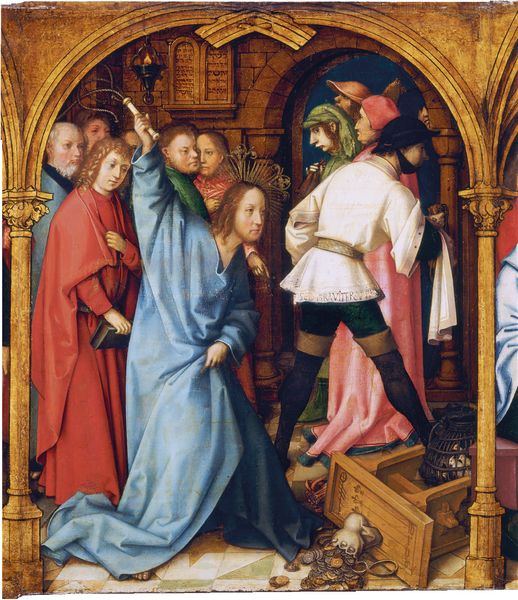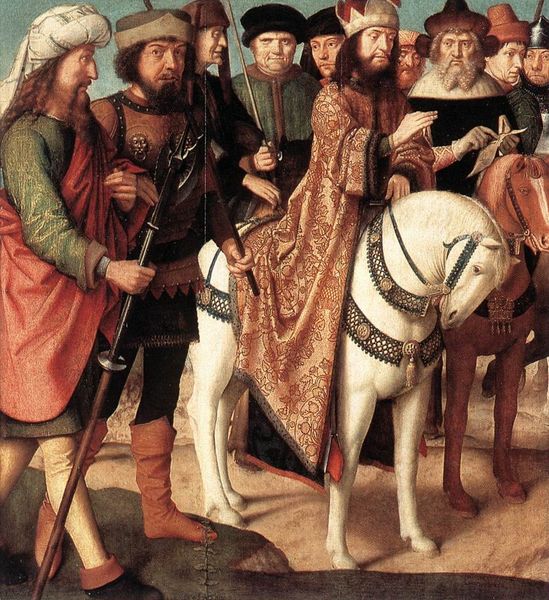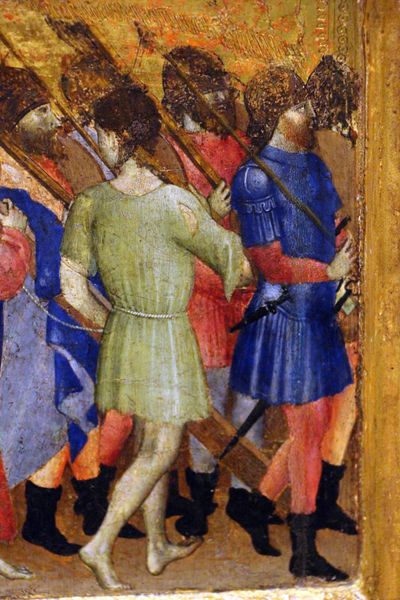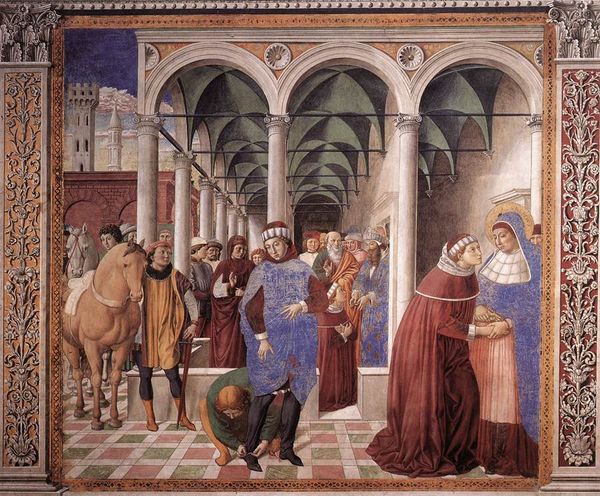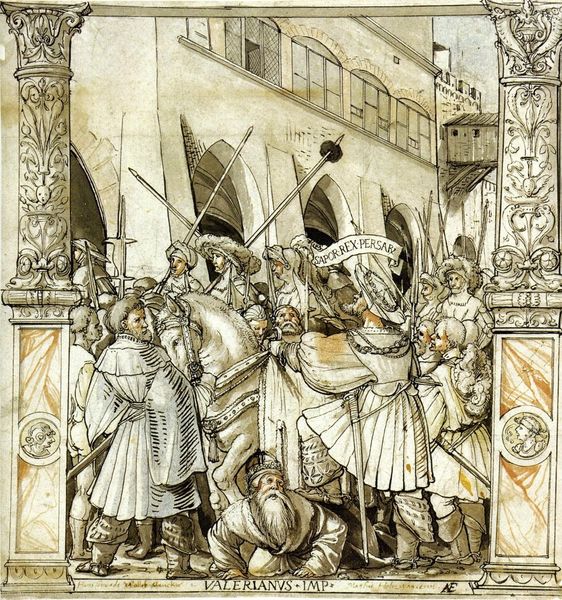
#
unusual home photography
#
11_renaissance
#
oil painting
#
studio composition
#
jesus-christ
#
child
#
acrylic on canvas
#
13_16th-century
#
facial painting
#
painting painterly
#
3d art
#
chaotic composition
#
portrait art
#
fine art portrait
Dimensions: 166.5 x 150.1 x min. 0.3 cm
Copyright: Public Domain
Curator: Hans Holbein the Elder painted this piece, Ecce Homo, around 1501. It now resides at the Städel Museum. Editor: It’s an unsettling piece. The muted colors and somewhat awkward figures give it a primitive yet powerful feeling. The scene pulsates with contained violence. Curator: I agree, there's a raw quality to it. The composition, while crowded, is structured by strong diagonals. Look at the stark contrast between the pale, almost sickly, flesh of Christ and the vibrant costumes surrounding him. It guides the eye. Editor: Absolutely. The clothing itself is laden with symbolism. Consider the grotesque, exaggerated hats. They are almost caricatures, embodying cruelty and perhaps societal corruption, acting as visual signifiers of injustice. Curator: Observe also the surface. The tangible presence of the brushstrokes brings the texture forward, creating an almost tactile reality of the event. See how the crown of thorns pierces his flesh, punctuated with those bright red spots? Editor: That crown is key. It's both a symbol of Christ's suffering and, paradoxically, of his royalty. Think about the cultural weight of that image through the ages – its repeated use to evoke empathy, guilt, and ultimately, faith. Curator: And consider the geometric patterning of the tiled floor; its intricate order is set in stark contrast with the disorder and injustice playing out on top of it, creating a dissonance that resonates deeply. Editor: Indeed. This piece feels relevant still. It's a grim reflection of humanity's capacity for inhumanity and offers potent symbolism related to sacrifice, suffering, and faith. Curator: A testament to the lasting power of formal construction, isn’t it? How these combined components yield a result greater than its parts. Editor: Precisely, demonstrating that symbols endure to convey messages that echo through generations.
Comments
Join the conversation
Join millions of artists and users on Artera today and experience the ultimate creative platform.
